Best Wrist Support Boxing Gloves – How to Avoid Boxer’s Fracture? [Complete Guide]
![Best Wrist Support Boxing Gloves - How to Avoid Boxer’s Fracture? [Complete Guide]](https://blog.aqfsports.com/wp-content/uploads/2023/08/image6-2.jpg)
One wrong move leads to serious injuries in boxing. Your wrists, like your fingers and hands, are delicate structures with complex anatomy. In boxing, power and technique are crucial for knocking down your opponent. But if your wrists are wobbly and unprotected, one wrong punch is all it takes to shatter your wrist bones. Boxers’ fractures, nerve compression, ligament tears and tendonitis are the most common boxing wrist injuries. The solution? Wearing the best wrist support boxing gloves.
Let’s break down why wrist support is an important element of boxing training:
Why Wrist Support Matters in Boxing?
Let’s talk about why keeping your wrists safe in boxing is a big deal. Your wrists make the foundation of a strong punch. Poorly supported wrists are more susceptible to injuries and interfere with punch power.
Boxer’s Fracture:
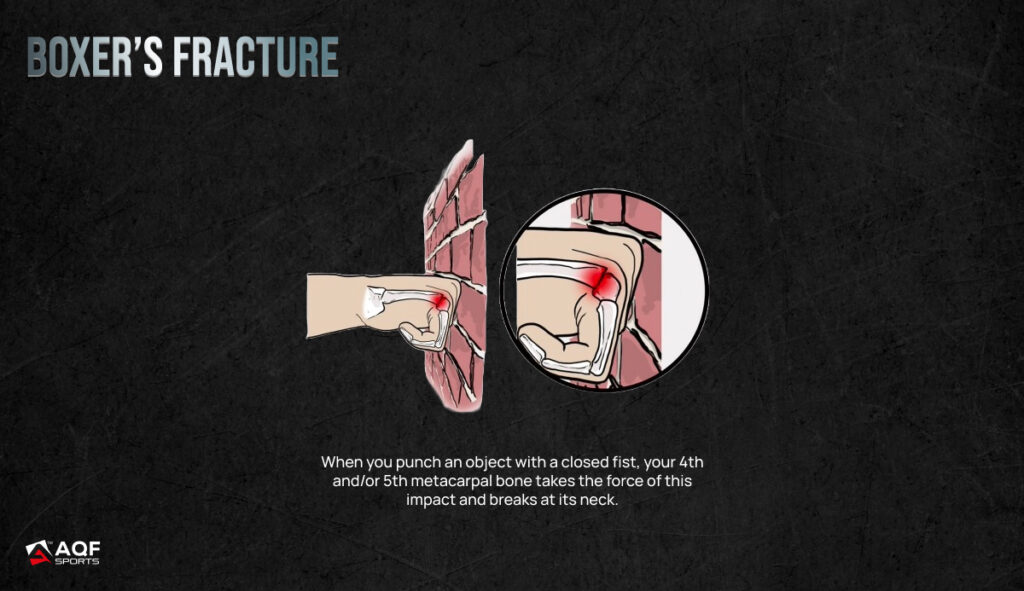
- A specific type of fracture involving the metacarpal bones, often referred to as the “boxer’s knuckle.”
- Incorrect punching technique or hitting with improper parts of the hand can lead to this fracture.
- Symptoms include pain, swelling, and deformity of the knuckle area.
Bare Wrists are Vulnerable to Injuries
Your wrists are delicate bridges connecting your hands with your forearms. When you throw punches, your wrists take a lot of the force. Improper alignment and lack of wrist support cause inappropriate wrist bending and injuries.
Read More: Do Boxing Gloves Hurt More Than Bare Fists?
Wrist Ligaments and Bones:
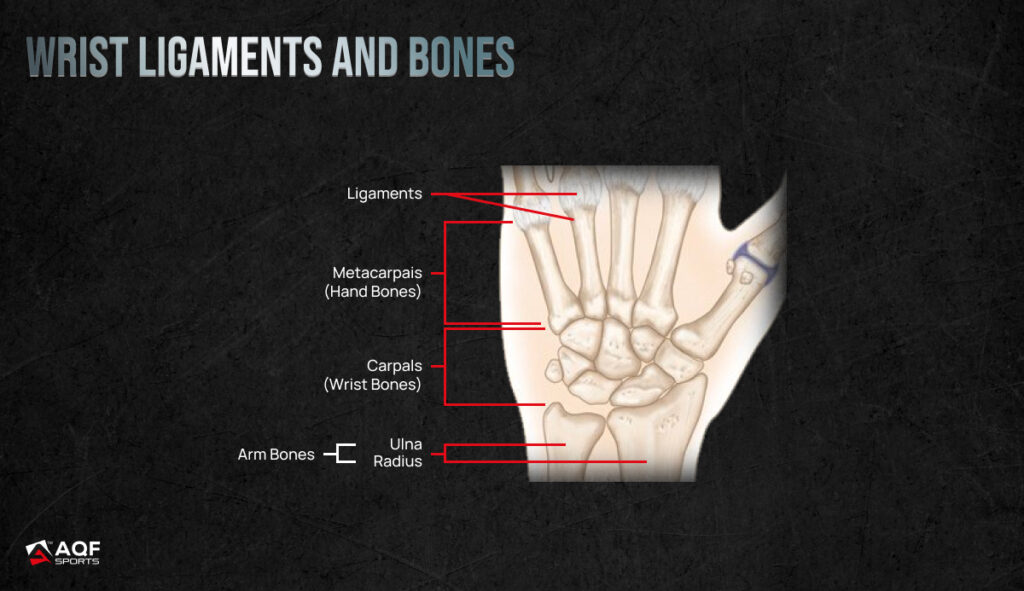
Inside your wrist, there are tiny bones and important connective tissues called ligaments. These ligaments are like rubber bands that hold your wrist together.
The wrist consists of a network of eight small carpal bones connected by ligaments and tendons. This intricate structure makes it susceptible to injury, particularly during repetitive and forceful movements.
Studies show that the wrist’s limited range of motion and its intricate joint composition expose it to potential strains, sprains, and fractures without adequate protection.
Power and Technique:
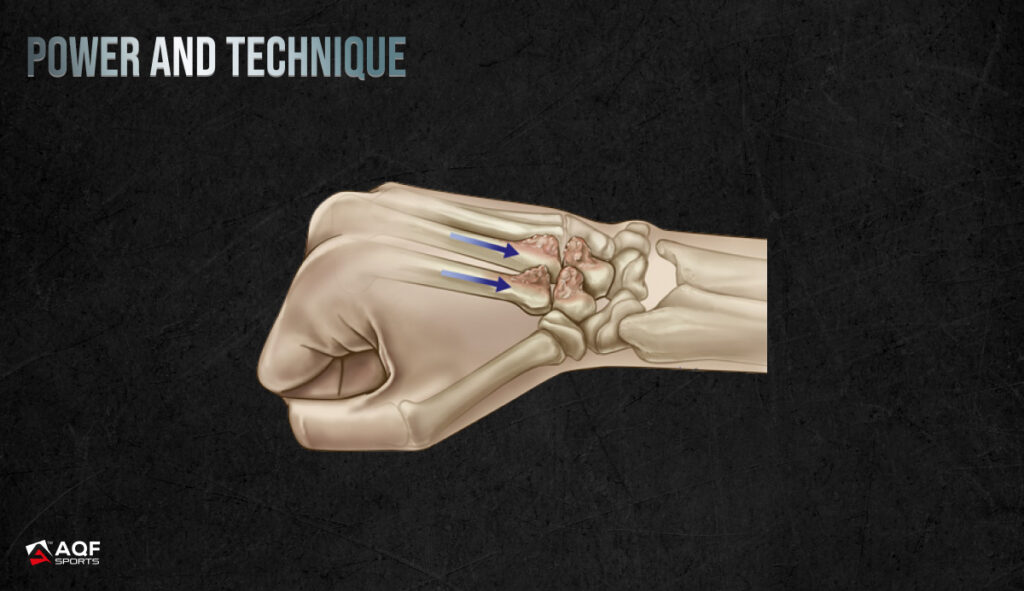
Wrist Support makes you more confident and you can throw more powerful shots without worrying about hurting yourself. Plus, your technique improves because your wrist isn’t wobbling all over the place.
Scientific studies emphasize that optimal wrist alignment enhances the punching technique. Wrist support contributes to more controlled and accurate punches. It also prevents energy wastage to maximize striking power and improve the defence.
Best Wrist Support Boxing Gloves – Key Things to Note
Wrist Stability:
Good boxing gloves keep your wrist straight when you throw punches. This helps prevent hurting your wrist by bending it too much.
Overall Fit:
Gloves that fit snugly around your wrist give it support. It’s like a gentle hug that stops your wrist from moving too much when you hit.
Straps and Closures:
Some gloves have straps you can adjust. These straps stop the gloves from sliding and help your wrist stay steady.
What to Look for in Best Wrist Support Boxing Gloves?
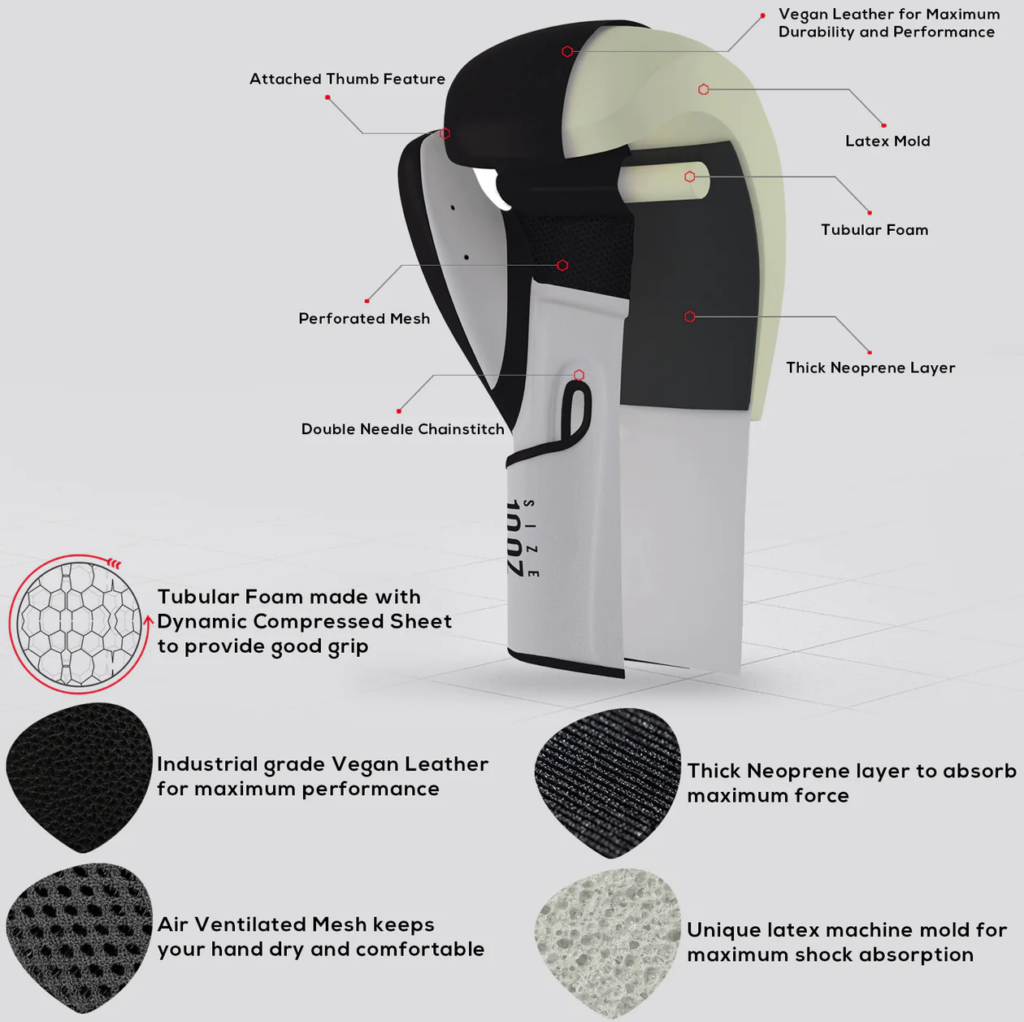
Adjustable Straps:
Look for gloves with straps that you can tighten or loosen.
Pull the strap till it snugly wraps around your wrist without cutting off circulation. You should feel the writst support without discomfort.
Check how easy it is to adjust the straps. You want them to stay in place during training but also be simple to change between rounds.
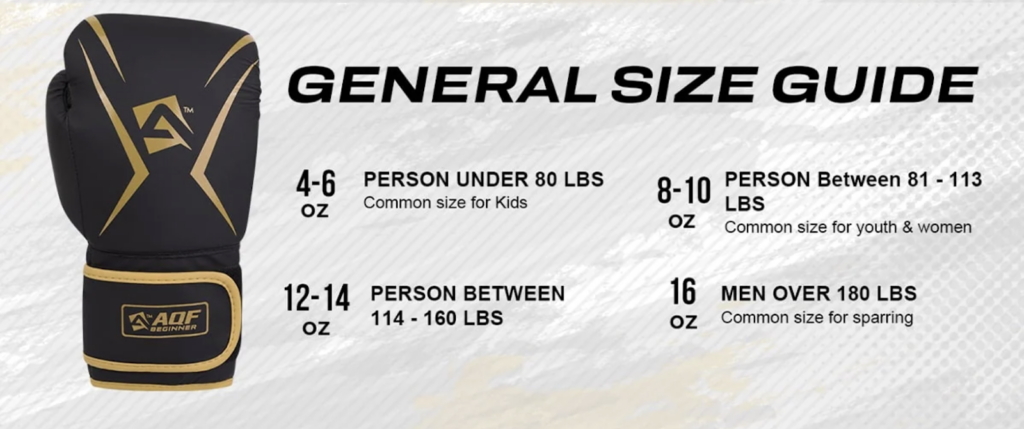
Comfort:
Choose gloves that feel snug but not too tight. Your wrist should feel secure like a friend holding your hand.
Put the gloves on and make a fist. If you can move your fingers without the glove sliding around, that’s a good sign of a comfy fit.
Try on different sizes to find what fits your hand best. Comfort matters, especially during long training sessions.
Wrist Position:
Ask a friend or coach to check your wrist alignment when you’re wearing the gloves. It’s easier for someone else to spot any issues.
When you wear the gloves. Check your wrist position – it should stay in a straight line, not bent up or down.
Look for gloves with a sturdy wrist area that naturally holds your wrist in place. This helps maintain proper alignment during punches.
Wrist Movement:
Your wrist should have a bit of room to move, but not too much. Think of it like a stable base that lets you pivot smoothly.
Try shadow boxing with the gloves. If your wrist feels secure and balanced while throwing different punches, you’re on the right track.
Buying Guide: Look for gloves with support near the wrist joint but not overly restrictive. It’s a balance between stability and mobility.
Extra Padding:
Gloves with padding around the wrist area give an added layer of protection to your wrist bones.
Gently press down on the padding around the wrist. You should feel a cushioning effect that reduces the impact on your wrist.
Check for gloves with thicker padding on the inside near the wrist. This provides additional support, especially during intense training sessions.
Lace-Up Gloves:
Lace-up gloves offer excellent support, but they take a bit longer to put on and take off.
Follow the correct lace-up technique: Start from the bottom and work your way up for a snug fit that supports your wrist well.
If you’re a fan of lace-up gloves, practice lacing them with a coach’s guidance before you’re in a hurry to get into the ring.
Best Wrist Support Boxing Gloves – Different Closure Systems:
Hook-and-Loop (Velcro) Closures Boxing Gloves:
These are the most common and convenient closures. Make sure the Velcro straps are wide enough to provide solid wrist support.
Before purchasing, close and adjust the Velcro straps. They should provide a secure and comfortable fit that doesn’t shift during punches.
Look for gloves with high-quality Velcro that doesn’t wear out quickly. A strong grip ensures your wrists stay supported during your entire workout.
Elastic and Slip-On Closures:
These gloves slide onto your hand like a sock. They offer convenience and a snug fit, but make sure the elastic isn’t too tight around your wrist.
Try a few practice punches with slip-on gloves. Ensure your wrist doesn’t slip inside the glove, maintaining stability.
Opt for slip-on gloves with reinforced elastic that won’t stretch out over time. A balance between comfort and security is key.
Hybrid Closure Systems:
Some gloves combine multiple closure systems for a custom fit. Check how well these closures work together to support your wrist.
Experiment with the different closures to find the combination that offers the best wrist support and comfort.
Look for gloves with hybrid closures that are easy to adjust. A well-thought-out combination can provide tailored support for your wrist.
Single Strap vs. Double Strap:
Some gloves have a single strap, while others have a double strap. Both can offer good support, but double straps often provide more adjustability.
If possible, try both styles to see which one feels better on your wrist. Double straps can allow for finer adjustments.
Consider your preference for simplicity versus customization. Double straps give you more control over the fit, especially for wrist support.
Single Strap Closure Advantages:
- Simplicity: Single strap closures are straightforward to use. You just secure the strap and you’re good to go.
- Quick Adjustments: They are faster to put on and take off, which can be beneficial during intense training sessions.
- Lightweight: The design is often lighter and less bulky, allowing for better movement and flexibility.
Single Strap Boxing Gloves are Good For:
- Beginners: Single strap closures are great for those new to boxing. They’re easy to manage, making it less overwhelming as you learn other aspects of training.
- Fast-Paced Training: If you’re in a fast-paced environment where you need to switch gloves quickly between drills or rounds, single-strap closures are a convenient choice.
Double Strap Closure Advantages:
- More Support: Double straps offer more adjustability, allowing for a more customised fit around your wrist. This can result in better wrist support during punches.
- Security: The extra strap provides an added layer of security, reducing the likelihood of the glove shifting or coming loose.
- Fine-tuning: You can fine-tune the fit around both the wrist and the palm, offering a comprehensive adjustment for a secure and comfortable feel.
Double Strap Boxing Gloves are Good For:
- Experienced Fighters: Those who have been boxing for a while may appreciate the added support and control over fit that double strap closures offer.
- Wrist Issues: If you have pre-existing wrist issues or require additional stability due to a past injury, double straps can offer the support needed.
- Precision Seekers: If you’re particular about how your gloves fit and want every detail to be just right, double straps allow for more precise adjustments.
Do you need hand wraps and boxing gloves?
Using both hand wraps and boxing gloves is highly recommended for several important reasons. Let’s break down why it’s essential to use both during your training sessions:
Hand Wraps:
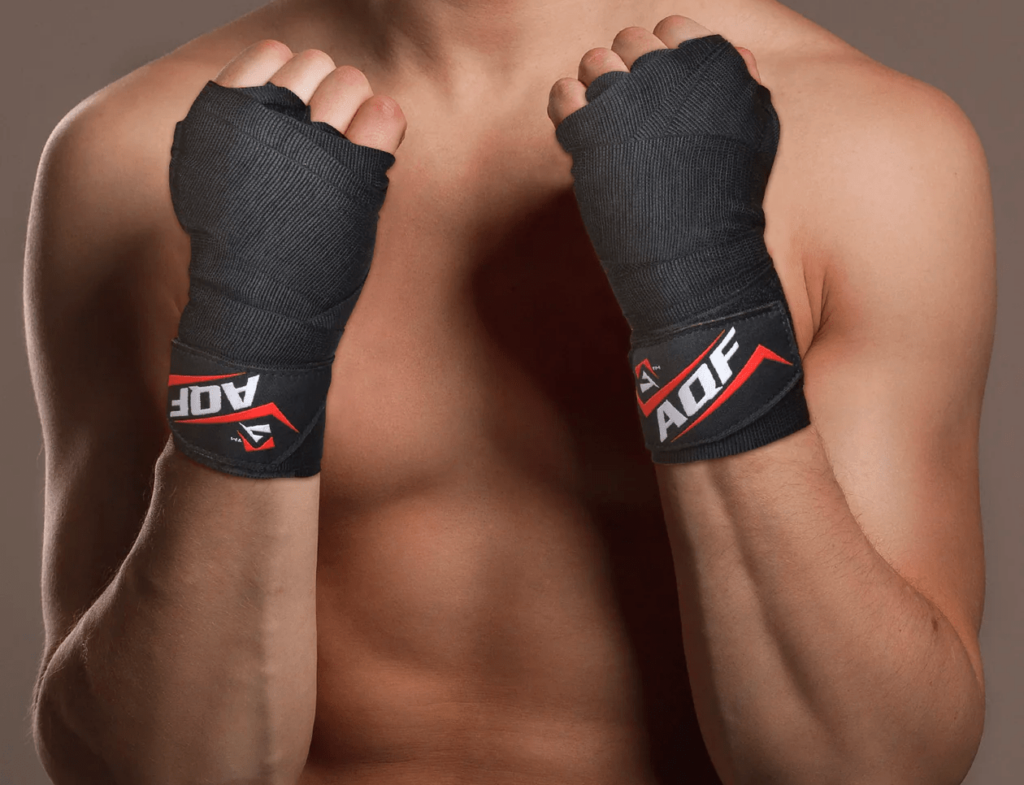
- Wrist and Knuckle Support: Hand wraps provide an additional layer of protection to your wrists and knuckles. They help stabilize your wrist joint and reduce the risk of injury or strain during punches.
- Impact Absorption: Wrapping your hands creates a cushioning effect that absorbs some of the impact from your punches. This reduces the stress on your knuckles and helps prevent hand injuries.
- Compression: Hand wraps offer compression that helps reduce swelling and keeps your hand muscles and joints in place, decreasing the chance of unnecessary movement during training.
- Sweat Absorption: Hand wraps also absorb sweat, keeping your hands and gloves drier and more comfortable. This prevents moisture from affecting your grip and the gloves’ interior.
Boxing Gloves:
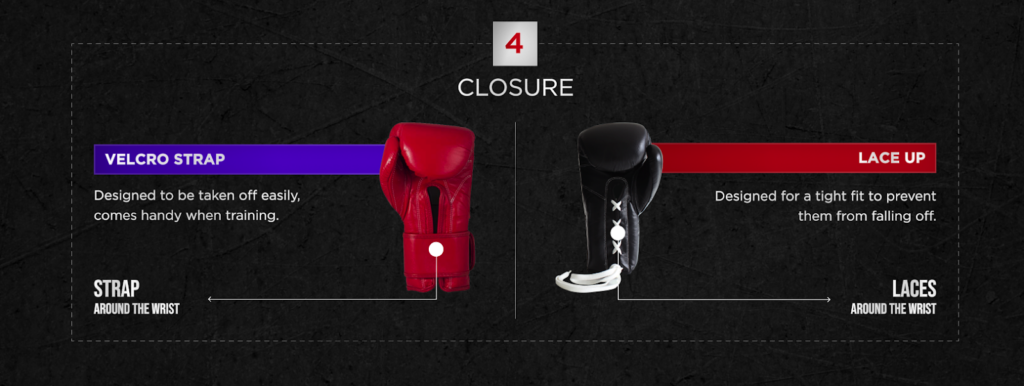
- Outer Protection: Gloves provide an extra layer of cushioning and padding to protect both your hands and your opponent. This reduces the risk of injuring yourself and ensures you don’t hurt your opponent unnecessarily.
- Even Impact Distribution: Properly padded gloves distribute the impact force more evenly across the surface of the glove, reducing the risk of concentrated impact on specific points of your hand.
- Hygiene: Gloves protect both you and your training partners from germs and bacteria. They act as a barrier between your skin and shared equipment.
What are common wrist problems from boxing?
Boxing is a physically demanding sport that places a significant amount of stress on the wrists. As a result, several common wrist problems can arise from boxing training and fights. Here are some of the most frequently encountered wrist issues:
Wrist Sprains:
- A wrist sprain occurs when the ligaments that connect the bones in the wrist are stretched or torn. [1]
- Overextending the wrist during punches or landing on the wrist can lead to sprains.
- Symptoms include pain, swelling, and limited range of motion.
Wrist Tendinitis (Tenosynovitis):
- This condition involves inflammation of the tendons in the wrist, often due to repetitive movements. [2]
- Repetitive punching motions and poor technique can contribute to wrist tendinitis.
- Symptoms include pain, swelling, and aching around the wrist joint.
Carpal Fractures:
- High-impact punches or improper punching technique can cause fractures in the small bones of the wrist, known as carpal bones.
- Carpal Fractures account for 8% of hand fractures [3] and lead to sharp pain, swelling, and limited wrist movement.
Wrist Impingement:
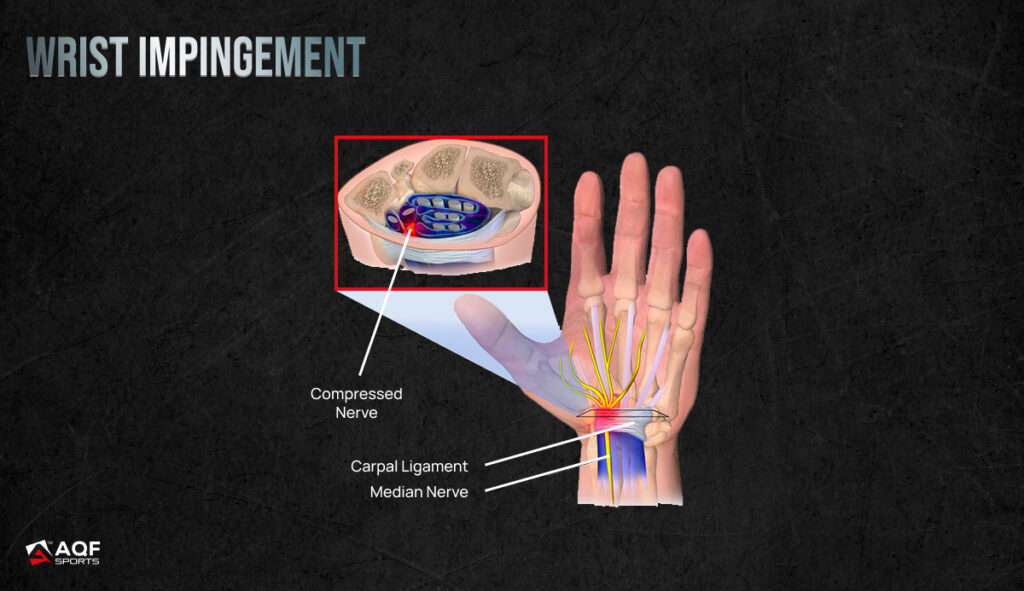
- Wrist impingement occurs when there is irritation or compression of nerve structures within the wrist joint. [4]
- Incorrect wrist alignment during punches or improper glove fit can contribute to this problem.
- Symptoms include pain, clicking sensation, and reduced wrist mobility.
Wrist Ganglion Cysts:
- Ganglion cysts are fluid-filled sacs that develop near joints or tendons. [5]
- Repetitive stress on the wrist from boxing can sometimes lead to the development of these cysts.
- Symptoms include a visible lump, pain, and discomfort.
TFCC (Triangular Fibrocartilage Complex) Injuries:
- The TFCC is a cartilage structure that stabilizes the wrist joint.
- Forceful punches, especially if the wrist is bent, can lead to TFCC injuries.
- Symptoms include pain on the pinky side of the wrist, weakness, and limited grip strength.
How long does boxing wrist pain last?
The duration of boxing wrist pain can vary significantly depending on the cause, severity, and how well it’s managed. Here’s a general timeline for different scenarios:
Minor Strain or Discomfort:
If the wrist pain is due to a minor strain or discomfort from an intense training session, it might last a few days to a week.
Rest, ice, compression, and elevation (RICE) can help alleviate the pain and reduce inflammation.
Avoiding strenuous activities and allowing the wrist to rest can speed up the healing process.
Sprains and Tendinitis:
Wrist sprains or tendinitis can take a few weeks to several weeks to heal.
Proper treatment, including rest, ice, anti-inflammatory medications, and possibly physical therapy, can expedite the recovery process.
Returning to boxing too soon can prolong the healing time and worsen the condition.
Fractures and Serious Injuries:
If the pain is due to a fracture or a more serious injury, healing can take several weeks to a couple of months.
Treatment might involve immobilisation with a cast or splint, followed by rehabilitation exercises to restore wrist strength and mobility.
Chronic or Overuse Injuries:
Chronic wrist pain resulting from overuse or poor technique might last for an extended period.
If the underlying cause isn’t addressed, the pain can persist and even worsen over time.
Rest, improving training techniques, and seeking professional guidance are crucial for resolving chronic wrist pain.
How to Avoid These Issues?
- Follow proper punching technique
- Incorporate regular hand and wrist conditioning exercises
- Wear high-quality boxing gloves with adequate wrist support
The Bottomline
Your wrists are the real MVPs of your boxing moves. They need that extra care so you can keep throwing hard-hitting punches without injuring yourself. Best wrist support boxing gloves with extra padding, good fitting, durable material and easy closure are an ideal fit for boxers and MMA enthusiasts.
Explore Related Topics:
- Tips for Choosing the Right Boxing Gloves for Beginners!
- How to Clean Boxing Gloves With Natural Remedies
- 7 Common Sports Injuries You Need to Know About
References:
[1] https://www.ncbi.nlm.nih.gov/books/NBK551514/
[2] https://www.ncbi.nlm.nih.gov/books/NBK544324/
[3] https://www.ncbi.nlm.nih.gov/pmc/articles/PMC10229675/






